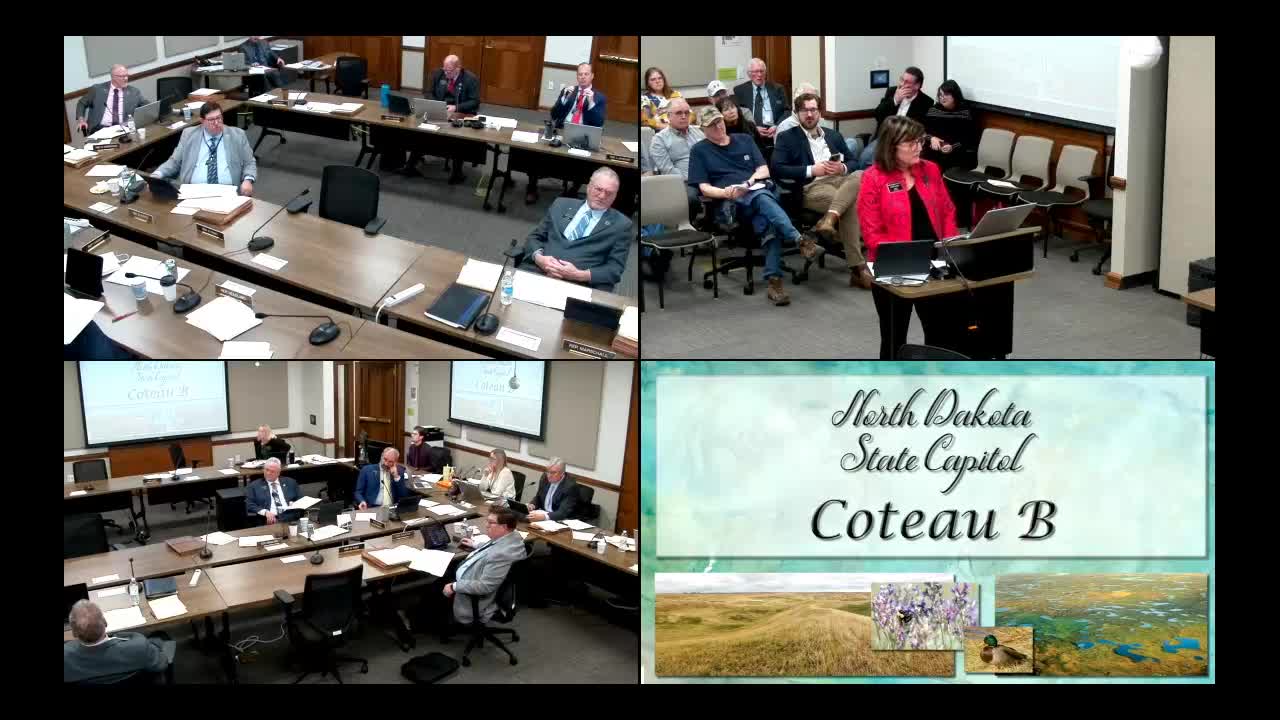Senator Turner advocates for stronger protections against CO2 pipeline hazards in North Dakota
January 30, 2025 | Energy and Natural Resources, House of Representatives, Legislative, North Dakota
This article was created by AI summarizing key points discussed. AI makes mistakes, so for full details and context, please refer to the video of the full meeting. Please report any errors so we can fix them. Report an error »

In a recent meeting of the House Energy and Natural Resources Committee in North Dakota, significant discussions centered around the implications of pipeline safety and community protection. The committee examined House Bill 1210, which aims to establish stronger protections for residents potentially affected by pipeline operations, particularly concerning carbon dioxide transport.
One of the key points raised was the lack of insurance options for individuals living near proposed pipeline routes. Concerns were voiced about the adequacy of insurance coverage for potential damages, especially given the scale and risks associated with a 24-inch pipeline running thousands of miles. The discussions highlighted the need for clear parameters to ensure that affected individuals can seek compensation in the event of an incident.
Representative Olson emphasized that individuals present in the vicinity of a pipeline incident should be recognized as victims, even if they are not direct landowners or tenants. This assertion sparked debate about the necessity of demonstrating actual harm to qualify for compensation, with committee members seeking clarity on the legal definitions involved.
Doyle Turner, the bill's author, argued for the importance of establishing a first lien position for victims, ensuring they are prioritized in compensation claims over creditors. He pointed out that past incidents, such as the Satarsha case, demonstrated the inadequacies of existing laws in protecting victims when companies face bankruptcy. Turner stressed that the bill is a proactive measure to prevent similar injustices in North Dakota.
The committee also discussed the insurance requirements for pipeline operators, with Turner questioning whether a $100 million insurance policy is sufficient for the risks involved. He called for more stringent financial assurances from companies like Summit Carbon Solutions, which are involved in constructing extensive pipeline networks.
As the committee continues to deliberate on House Bill 1210, the discussions underscore a growing recognition of the need for enhanced regulatory frameworks to protect North Dakota communities from potential pipeline hazards. The outcome of this bill could set a precedent for how the state addresses the intersection of energy infrastructure and public safety in the future.
One of the key points raised was the lack of insurance options for individuals living near proposed pipeline routes. Concerns were voiced about the adequacy of insurance coverage for potential damages, especially given the scale and risks associated with a 24-inch pipeline running thousands of miles. The discussions highlighted the need for clear parameters to ensure that affected individuals can seek compensation in the event of an incident.
Representative Olson emphasized that individuals present in the vicinity of a pipeline incident should be recognized as victims, even if they are not direct landowners or tenants. This assertion sparked debate about the necessity of demonstrating actual harm to qualify for compensation, with committee members seeking clarity on the legal definitions involved.
Doyle Turner, the bill's author, argued for the importance of establishing a first lien position for victims, ensuring they are prioritized in compensation claims over creditors. He pointed out that past incidents, such as the Satarsha case, demonstrated the inadequacies of existing laws in protecting victims when companies face bankruptcy. Turner stressed that the bill is a proactive measure to prevent similar injustices in North Dakota.
The committee also discussed the insurance requirements for pipeline operators, with Turner questioning whether a $100 million insurance policy is sufficient for the risks involved. He called for more stringent financial assurances from companies like Summit Carbon Solutions, which are involved in constructing extensive pipeline networks.
As the committee continues to deliberate on House Bill 1210, the discussions underscore a growing recognition of the need for enhanced regulatory frameworks to protect North Dakota communities from potential pipeline hazards. The outcome of this bill could set a precedent for how the state addresses the intersection of energy infrastructure and public safety in the future.
View full meeting
This article is based on a recent meeting—watch the full video and explore the complete transcript for deeper insights into the discussion.
View full meeting
